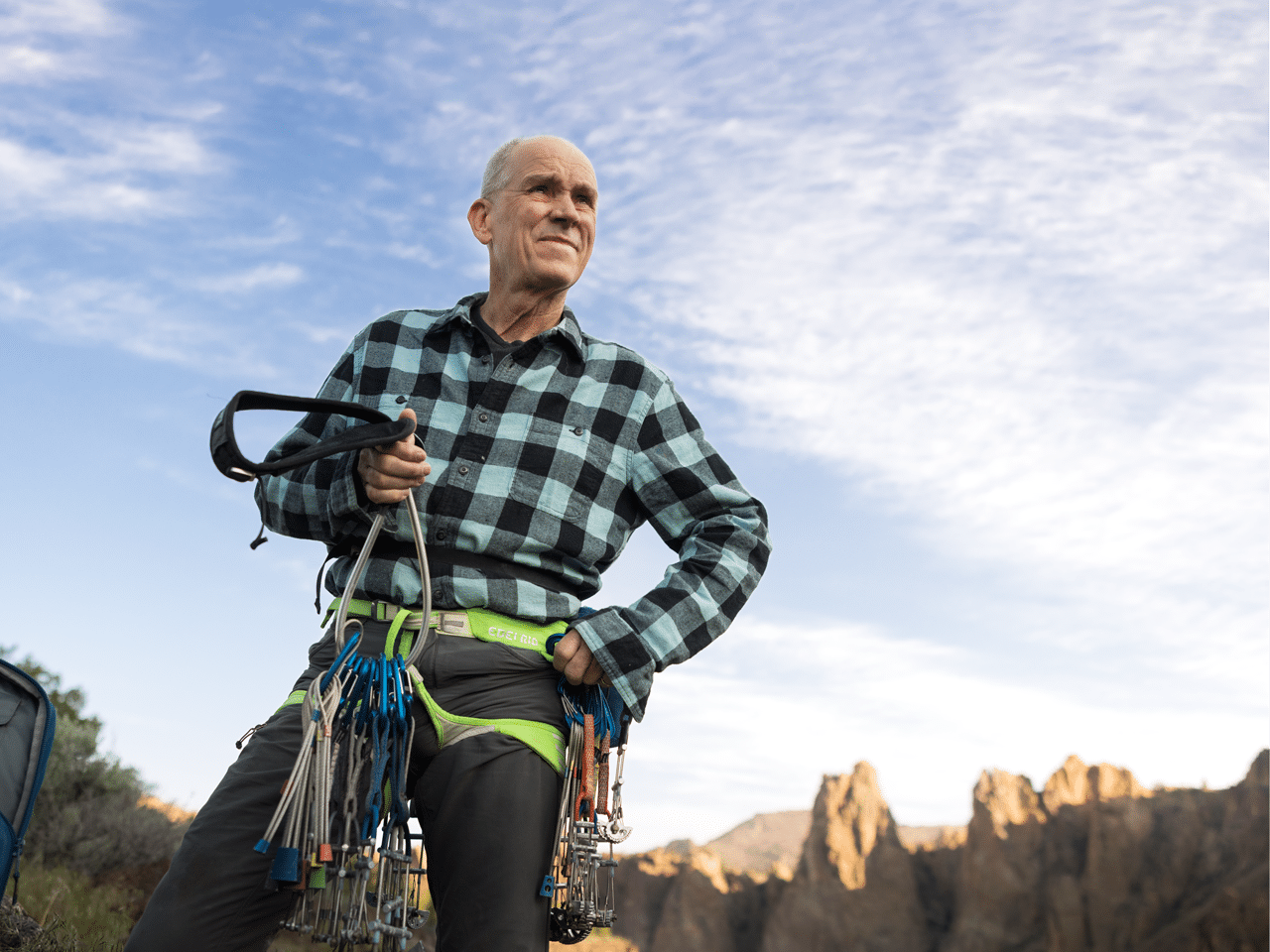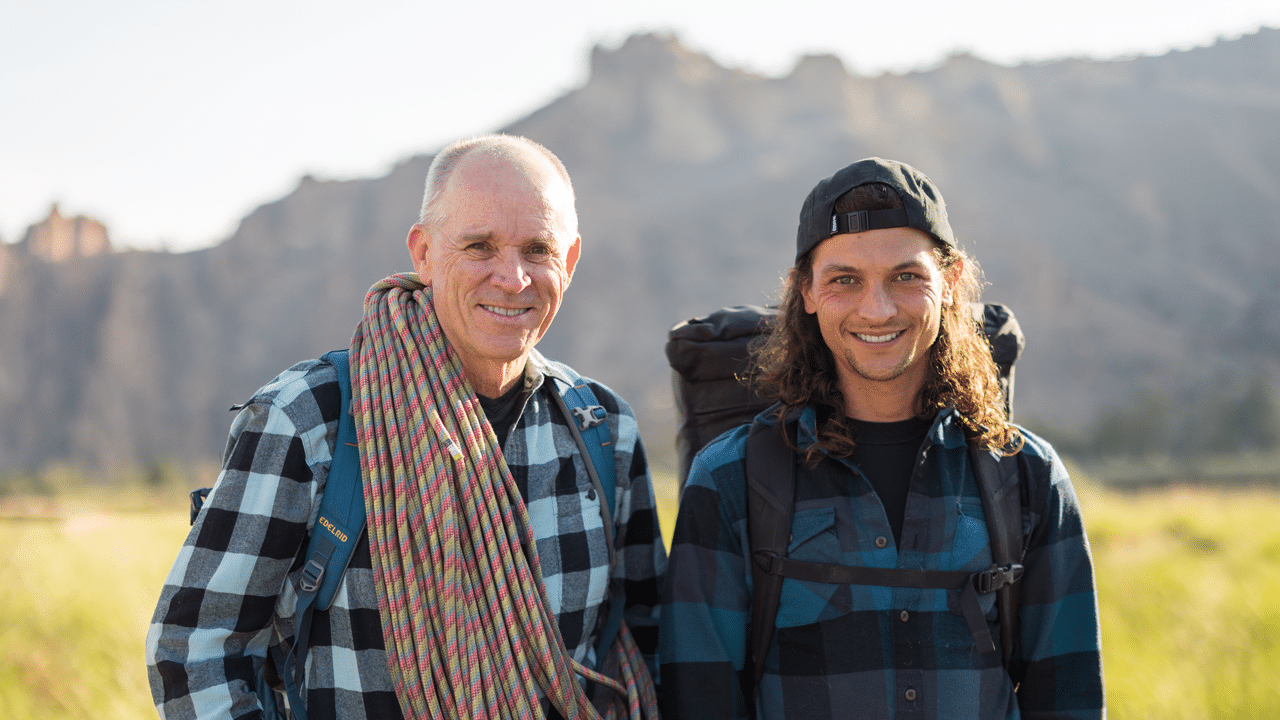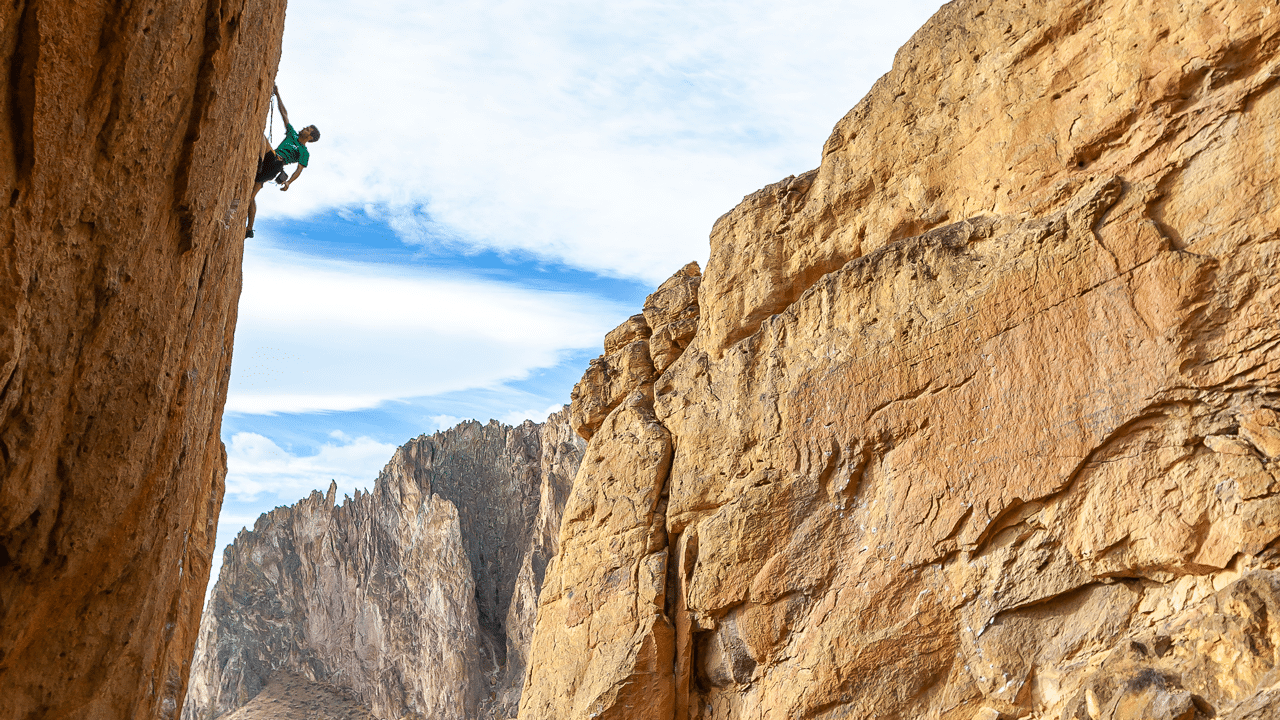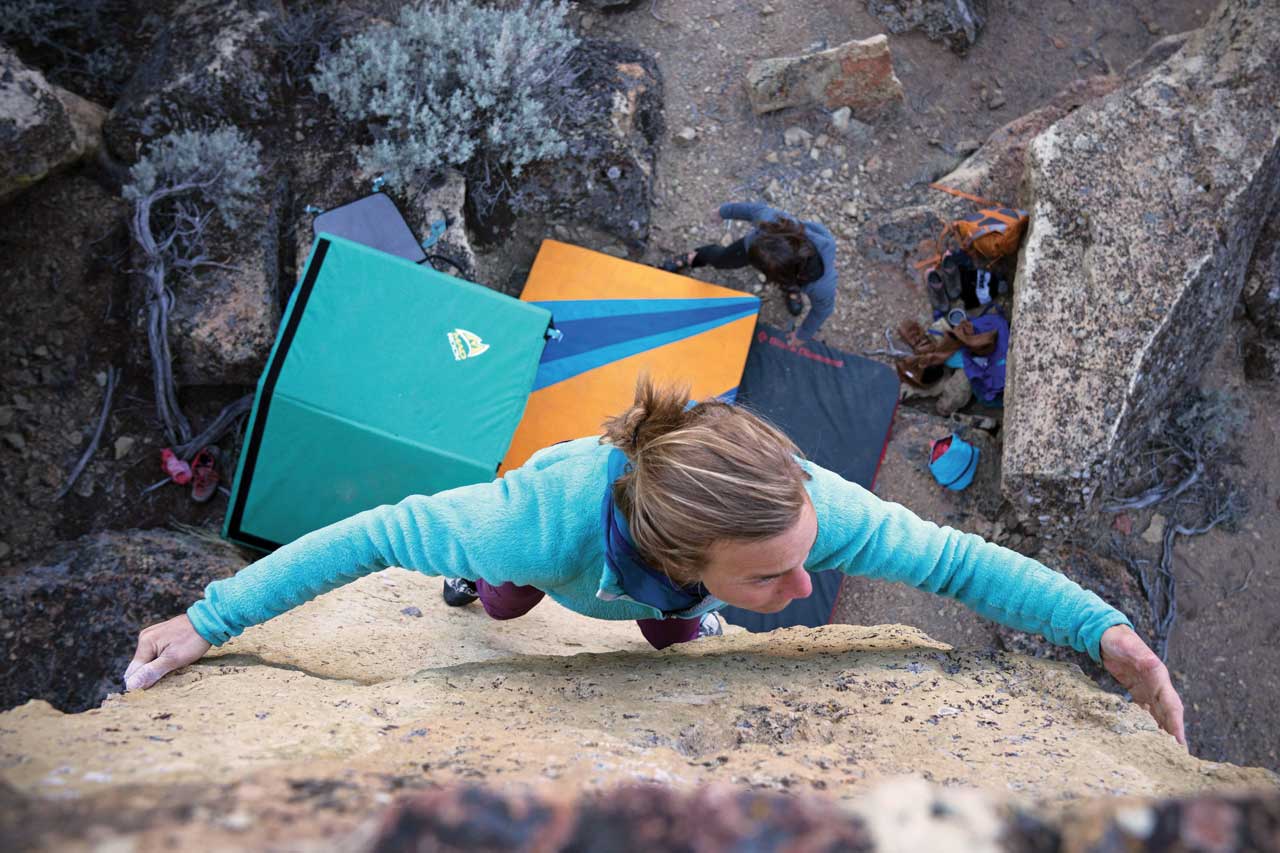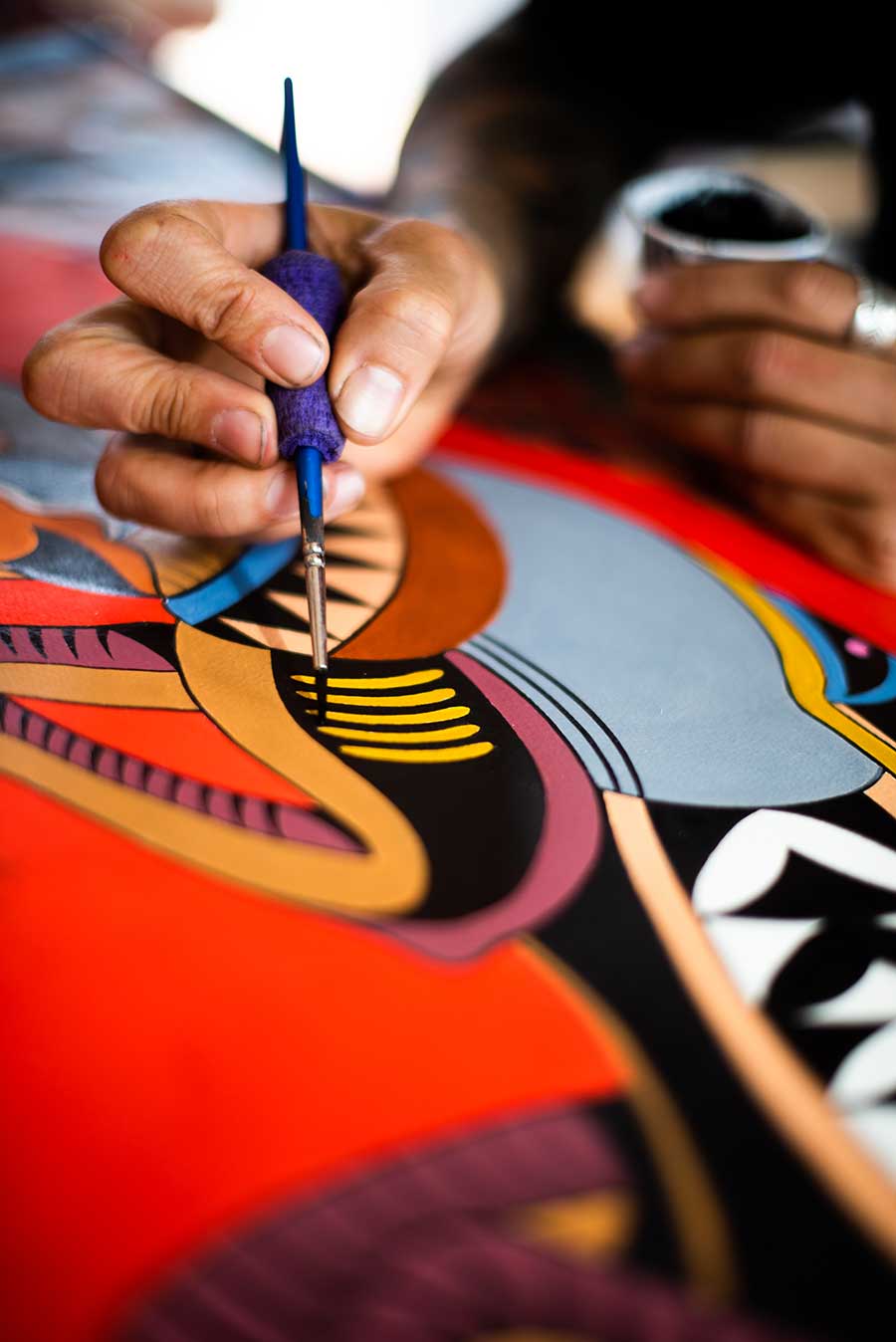They’re out on the river trail or in the woods outside of town, people hiking with what look like mattresses strapped to their backs or clinging to tiny holds on trailside boulders. “What are they doing?” you might wonder, or maybe you’re a savvy outdoors person who already knows: They’re bouldering. [Photo above by Adam McKibben]
People call bouldering trendy, but climbing on boulders for sport has been “trending” since the late 1800s. In his essay “Games Climbers Play” (Ascent, May 1967), Lito Tejada-Flores called bouldering the most-complex of the climbing games, because it had the most rules, no ropes, equipment or partners allowed. But bouldering is really the simplest of the climbing games because of its, well, simplicity, no gear, just you climbing up a boulder or short cliff, not far off the ground, for no particular reason other than it’s a fun bit of invigorating outdoor exercise.
What’s the attraction? Bouldering is both mentally and physically engaging, using mind and body to solve a problem on the rock. It’s a workout that’s also meditative, allowing you to be present in the moment as you crank or finesse up the rock. It’s therapeutic, a way to clear your mind after a tough day at work or school. If you need space, you can boulder alone and enjoy the solitude; if you’re social, you can meet up with friends.
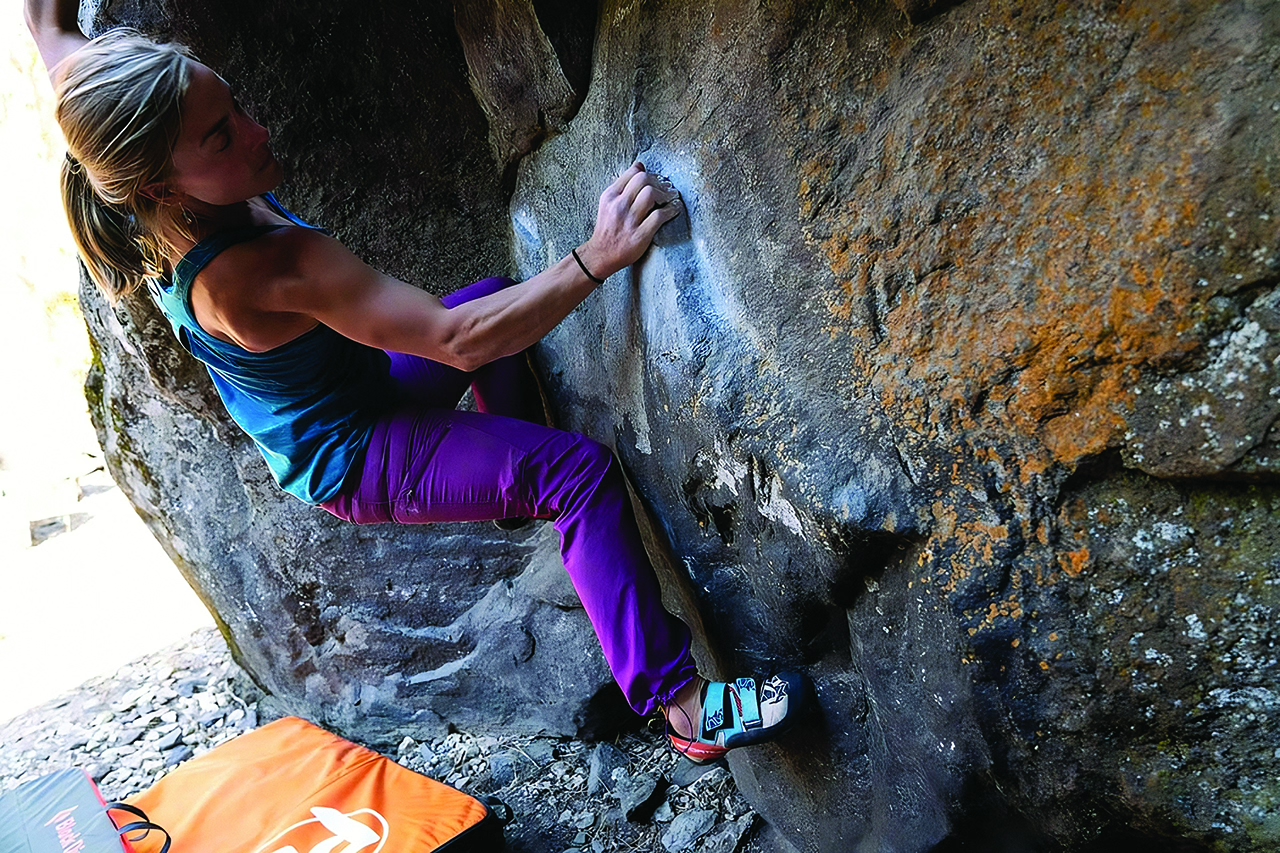
The Unique Appeal of Bouldering
“It’s a way to constantly chase movement, to repeat and refine movement on rock,” is how Bend-resident Mike Rougeux described bouldering’s appeal. “It’s a snappy, powerful style of climbing that suits me.”
Rougeux, the executive director of Bend Endurance Academy, a kid-focused nonprofit with a mission of championing healthy living and lifelong passion for sports, started climbing in the Gunks in New York (short for Shawangunk Mountains, one of the premier climbing destinations in the United States). He saw people bouldering and thought, “There’s real climbing here; why are they bouldering?”
Now he admits he spends more time bouldering than “real climbing.” While he appreciates the camaraderie of group climbing, especially the support and celebrations of the almost moments when people nearly reach the top, Rougeux prefers to climb alone.
“It’s a way to get some time on rock without feeling like I’m neglecting my parenting or work responsibilities,” he said. “I can be on the boulders in just a few minutes. It’s very accessible and convenient.”
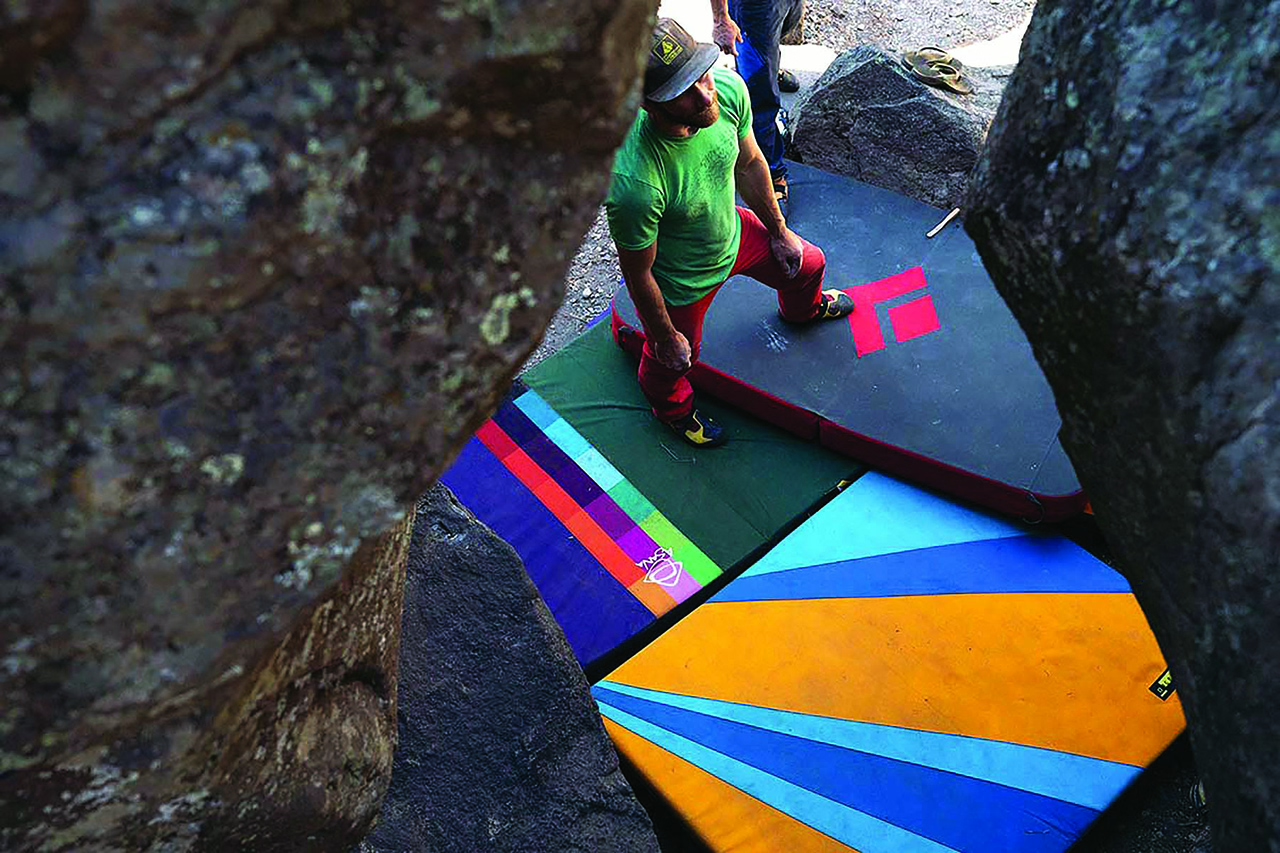
Fun for Everyone
Despite bouldering’s increasing popularity, most local areas aren’t crowded. “There are a lot of bouldering areas that aren’t in a guidebook,” Rougeux confided. “You can still explore and get away from the crowds.”
It’s also a great activity for kids, who seem to flock to big rocks. Rougeux took his son, Kieran, age 6, bouldering with him as he was growing up.
“At first it was just adventure in the woods, throwing pine cones and exploring, but eventually he developed his own circuit on these little boulders. He got very into it.”
Bouldering is fairly safe as climbing goes, because it’s close to the ground. Although some boulders are more than 20 feet high, and they don’t all have nice, flat landings. That’s where the pads come in, helping to cushion your landing in case you fall from high up, although you may still find stubborn old-school climbers out cranking highballs with just rock shoes and a chalk bag, no pads in sight.
Most people try indoor bouldering first to get the hang of it before venturing outdoors. Bend Rock Gym and The Circuit Bouldering Gym both have bouldering areas with hundreds of problems (see glossary) in a wide range of difficulties, and Bend Endurance Academy has its own dedicated bouldering wall. There’s also Alpenglow Community Park, which has several precast and custom-built artificial boulders, a good place to try bouldering for the first time, especially for kids. Careful, though. Bouldering is addicting. Before you know it, they’ll be crushing highball. Read more about rock climbing and bouldering in Bend.
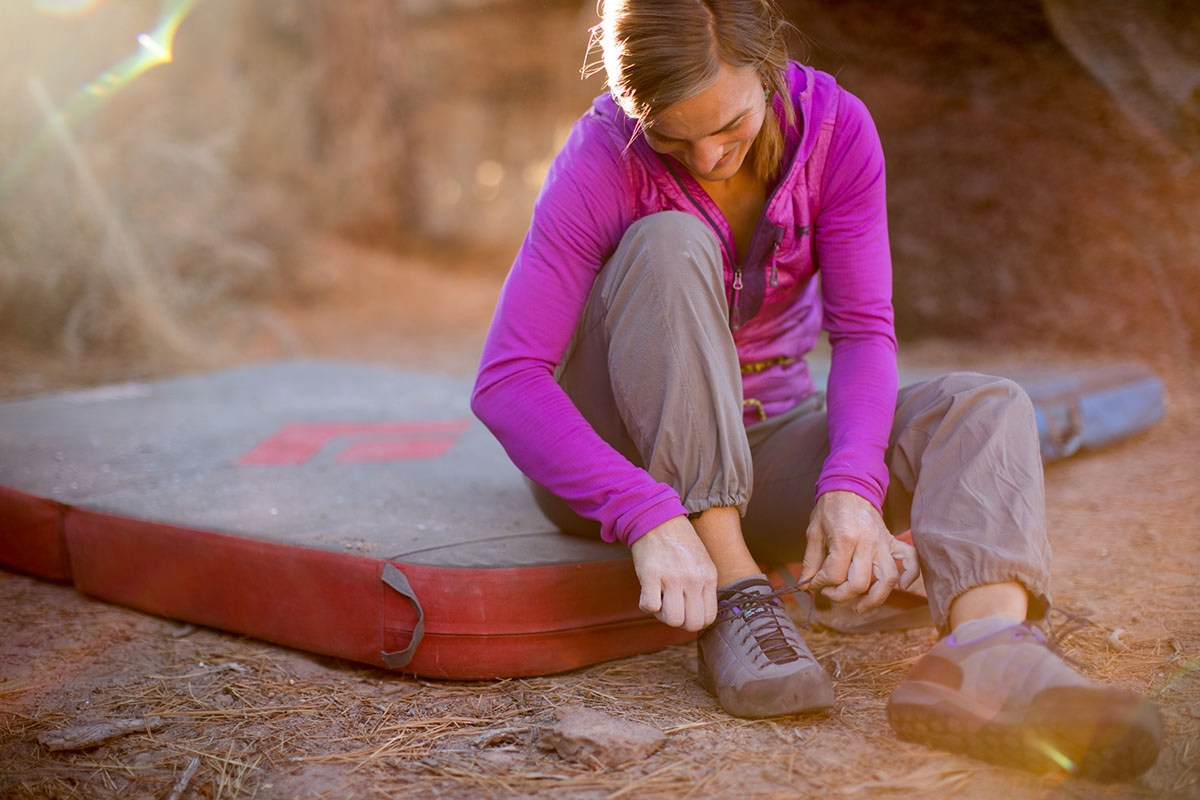
Bendites are lucky to have several popular bouldering spots right in town or a few miles out, including:
The Depot: The Depot is a basalt cliff band on the Deschutes River, a 15-minute hike up the trail. It offers various problems from warm-ups like The Big Easy (V1) to challenging climbs like The Goblin (V11).
Mount Bachelor Village: Directly across the river from The Depot, the Classic Corner area has several good boulders. Some include the Classic Traverse (V2) and Walk in the Park (V0) on Juniper Slab, a stellar problem that’s V-Fun.
Meadow Camp: A few miles farther up the river at the Meadow Creek Day Use Area, near Widgi Creek Golf Club, find a couple dozen boulders scattered along a welded tuff cliff line above the river. A day pass or NW Forest Pass is required.
Widgi Creek: At the end of a gravel road across Cascade Lakes Highway from Widgi Creek Golf Club, find 30 or so boulders hidden in the forest.
Mile Marker 5: Five miles up Skyliners Road, there are an assortment of shaded boulders with flat landings.
Smith Rock State Park: The park has hundreds of boulder problems scattered throughout. Although it has a reputation of being crowded, you can find easy and moderate boulders away from the crowds.
To find out more, check out Central Oregon Bouldering by Jason Chinchen. Published in 2017, it has 300 pages detailing all of the best bouldering in the Bend area.
Bouldering Terminology
Problem: A bouldering route or variation.
Highball: A problem that is high off the ground.
Traverse: A horizontal problem close to the ground.
V-Scale: The rating system for bouldering where V0 is “easy” and V17 is currently the most challenging.
V-Fun: A boulder problem that is super easy but a lot of fun to climb.

